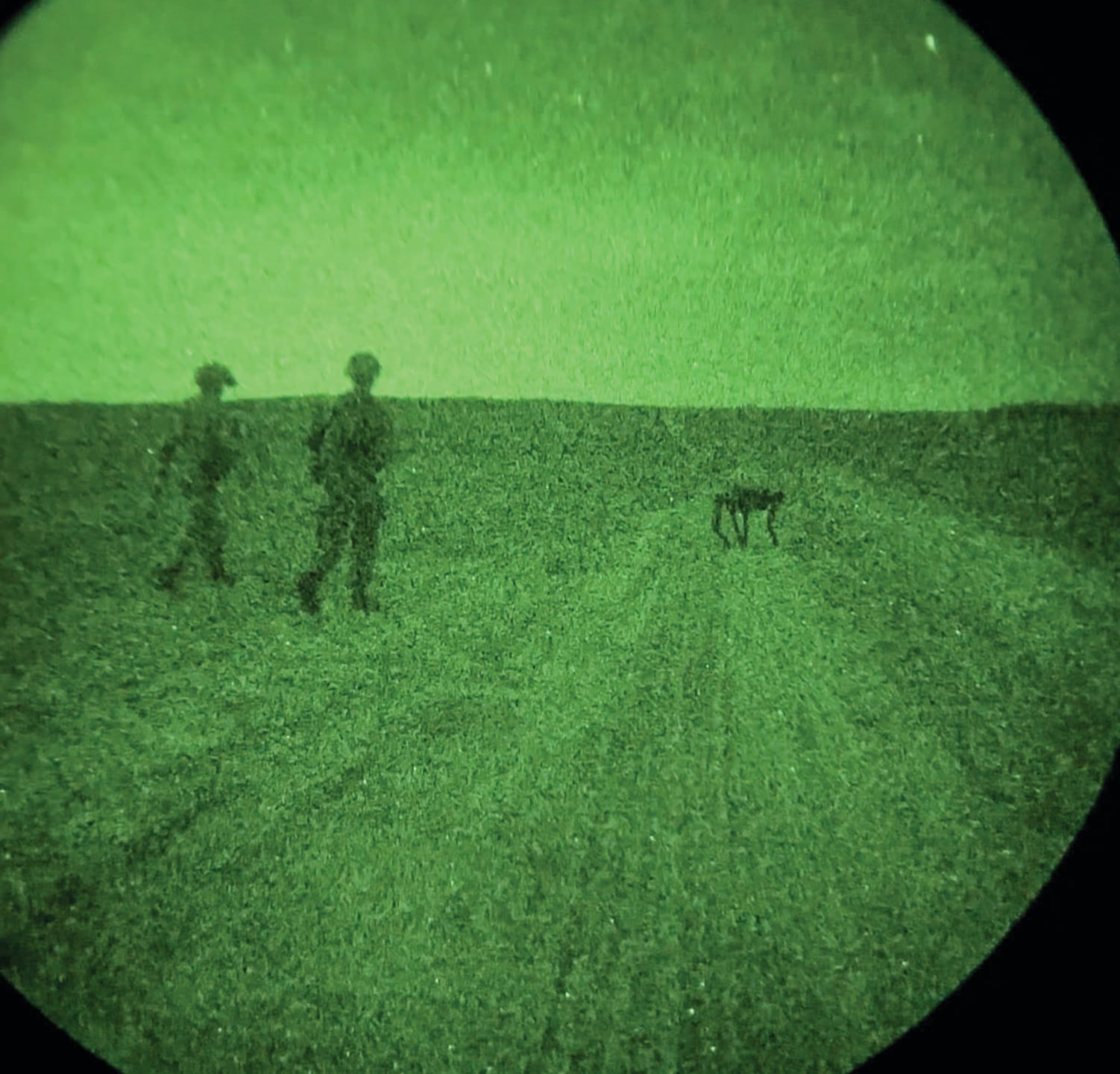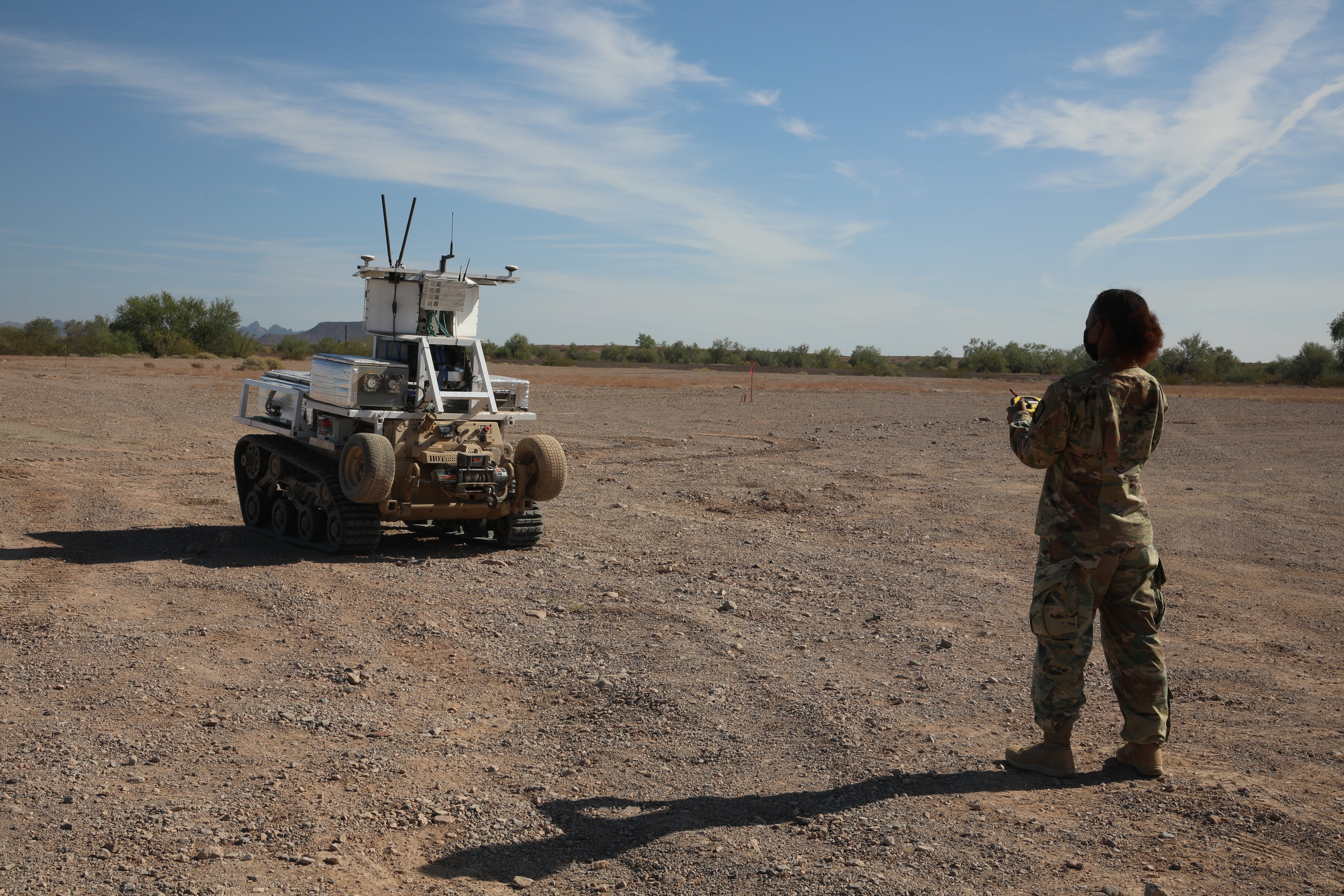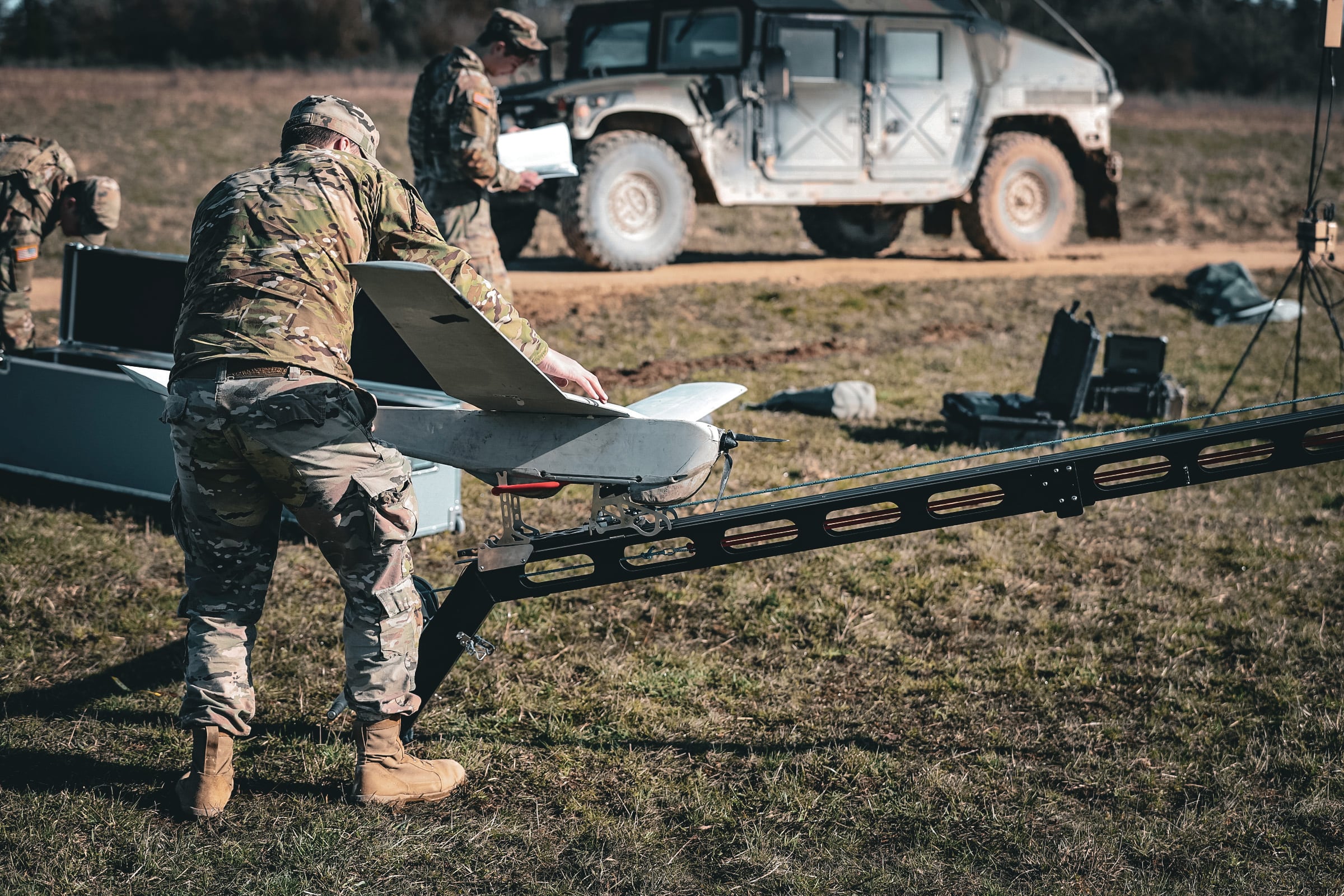WASHINGTON — The U.S. Army is using years’ worth of experimentation with robots and emerging technology to develop integrated fighting formations of both humans and robots, according to service officials in charge of modernization efforts.
“We should never again trade blood for first contact,” Gen. James Rainey, who leads Army Futures Command, told an audience of soldiers during the Army Warfighting Summit at Fort Liberty, North Carolina, this summer.
“Whether it’s an [improvised explosive device], a minefield or an ambush,” Rainey said, “if you’re going to do a river crossing, you shouldn’t figure out where the enemy is with the guys on the [assault bridge]. So how do you integrate humans and machines where you optimize both, offload risk from our most precious weapon system we got ... a U.S. Army soldier?”
Rainey also said the service wants to “free up and preserve our humans to do the things that only they can do: ethical decision-making in combat.”
“We’re never going to offload that on a robot,” he added.
Now, Rainey is assembling a team to tackle what he is calling human-machine integration. His command will develop requirements; the Army’s Rapid Capabilities and Critical Technologies Office will synchronize materiel solutions; and the Combined Arms Center within Army Training and Doctrine Command will identify how integrated formations fit into doctrine, sustainment and training.
The Army is in the nascent stage of working out what human-machine integration will mean in a warfighting formation.
“Sometimes, I think that the purpose of a robot on the battlefield is to get the human in a position of relative advantage so they can do what only a human can do. And other times I think: ‘Well, maybe robots are like working dogs, where the human is in a position to get the working dog into a position of relative advantage to do what only that working dog or what only that robot can do,’ ” Lt. Gen. Ross Coffman, the command’s deputy chief, told Defense News in a recent interview.
“Maybe it’s both,” Coffman said. “We have to use humans in a position of relative advantage where only humans can do it, and the same is true for a robot.”
Human-machine integration at this stage is about “learning what we need to about these technologies in order to ensure that we leverage the best technologies [that exist] coupled with the best that humans have to offer,” Lt. Gen. Robert Rasch, the director of the Rapid Capabilities and Critical Technologies Office, or RCCTO, said in an interview.
Fighting as one
The Army has conducted human-machine teaming using such capabilities as intelligence, surveillance, reconnaissance and strike drones on the battlefield to help humans, Rasch said, as well as unmanned ground vehicles. Bomb disposal robots have also existed for decades.
Additionally, the service has artificial intelligence-enhanced decision aids. AI and machine-learning technology can quickly process data, Rasch noted.
However, human-machine integration will be tied to formations, he said.

“We don’t really fight as individual systems, and we don’t fight as individual soldiers. We fight as formations, and so we’re looking more broadly than just the widget, but how a combination of technologies coupled with human decision-making responsibility will increase the lethality and survivability of our overall warfighting formations,” he said.
RCCTO and the rest of the team working on designing such formations will be on a learning campaign for a while, he said, but a future vision for the capability “would see a combination of formations that include both ground and air systems and the enablers to help find, fix, engage the enemy with humans in that decision cycle,” Rasch said.
“Whether they’re robots on the ground or drones in the air, they’re not going to work just as individual systems, but also [need to be] smart enough to work with other unmanned systems or manned systems,” he added.
What tech does the Army want?
RCCTO plans to use existing science and technology as well as information from fielded programs to figure out how to combine capabilities in a way that makes sense on the battlefield. Robotics are becoming more reliable and more autonomous, Rasch said, and standard interfaces for different payload adaptations are improving, as are the payloads and sensors themselves.
Additionally, generative AI is rapidly maturing. When incorporated into decision aids, the combination could increase the speed of human decision-making, he said.
Rasch said the Army wants industry “to push a little harder on some of the off-road autonomy because that’s an area that is still hard.”
“There’s a lot of progress [that] has been made, but it’s still hard and quite frankly relies on relatively expensive sensor packages onboard in order to successfully negotiate,” he continued. “What I’m trying not to do is build a really, really expensive robot that we don’t want to put in harm’s way.”
Establishing simple, open interfaces is another area of focus for the government and industry, Rasch noted.
RCCTO is also taking technology used in the Army’s Robotic Combat Vehicle and Small Multipurpose Equipment Transport efforts as a starting point to evaluate capability, Rasch said. And while the technology is advancing, one of RCCTO’s tasks is to harden it for the battlefield.
Experimentation and beyond
More experimentation is planned during the Army’s large-scale campaign of learning — dubbed Project Convergence — in spring 2024, according to Willie Nelson, another Army Futures Command deputy.
The Army plans to examine a full platoon working as an integrated unit of both humans and machines, Nelson said. The service previously conducted technology demonstrations, but now it will graduate to a more complex level of experimentation at Project Convergence. “How does that formation’s warfighting effectiveness increase as a result of having that integrated kit?” Nelson added.

But the Army also must “get these systems to where we don’t just do an experiment with them, but we actually field them to a unit formation, to a company — either infantry or armor,” Rasch said. “That is where the real learning occurs.”
RCCTO aims to get the initial formations into the field within two years once the effort receives funding in subsequent budget cycles, Rasch added.
“Once we get it through safety testing, we can actually put it out and start training, collective training, and hopefully get them ready for a combat training center rotation down the line, where we can start testing” tactics, techniques and procedures, Rasch said. This way, formations will learn more about long-term sustainability and reliability of components on the platforms, he noted.
Rasch said he envisions fully fleshed out programs in time to create cohesive formations for the Army, possibly by 2030, but more likely around the 2035 to 2040 time frame.
Jen Judson is an award-winning journalist covering land warfare for Defense News. She has also worked for Politico and Inside Defense. She holds a Master of Science degree in journalism from Boston University and a Bachelor of Arts degree from Kenyon College.





